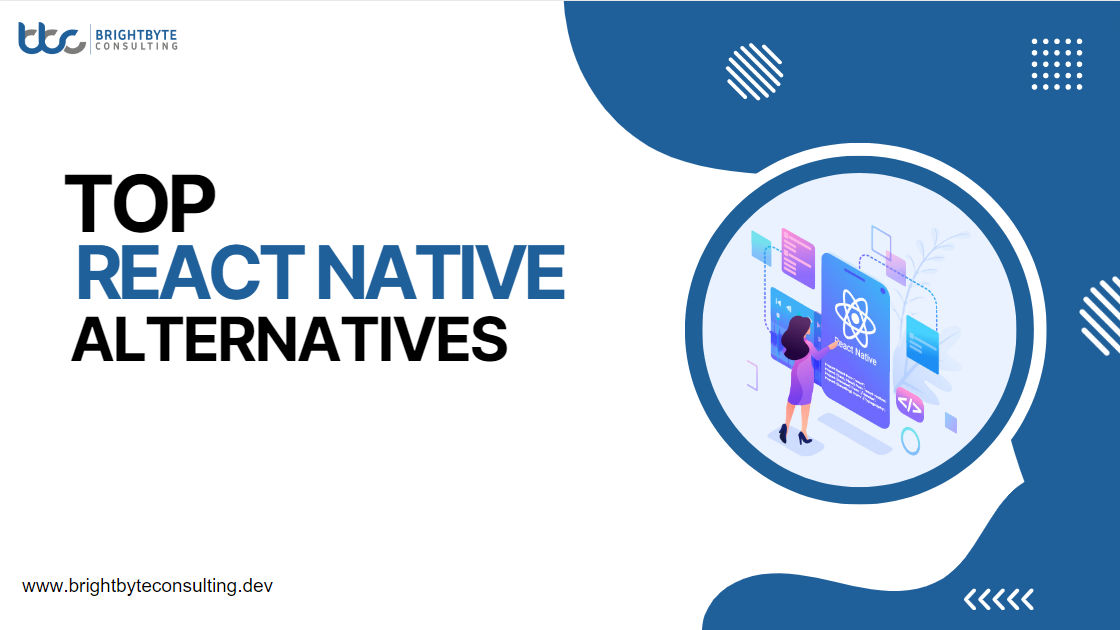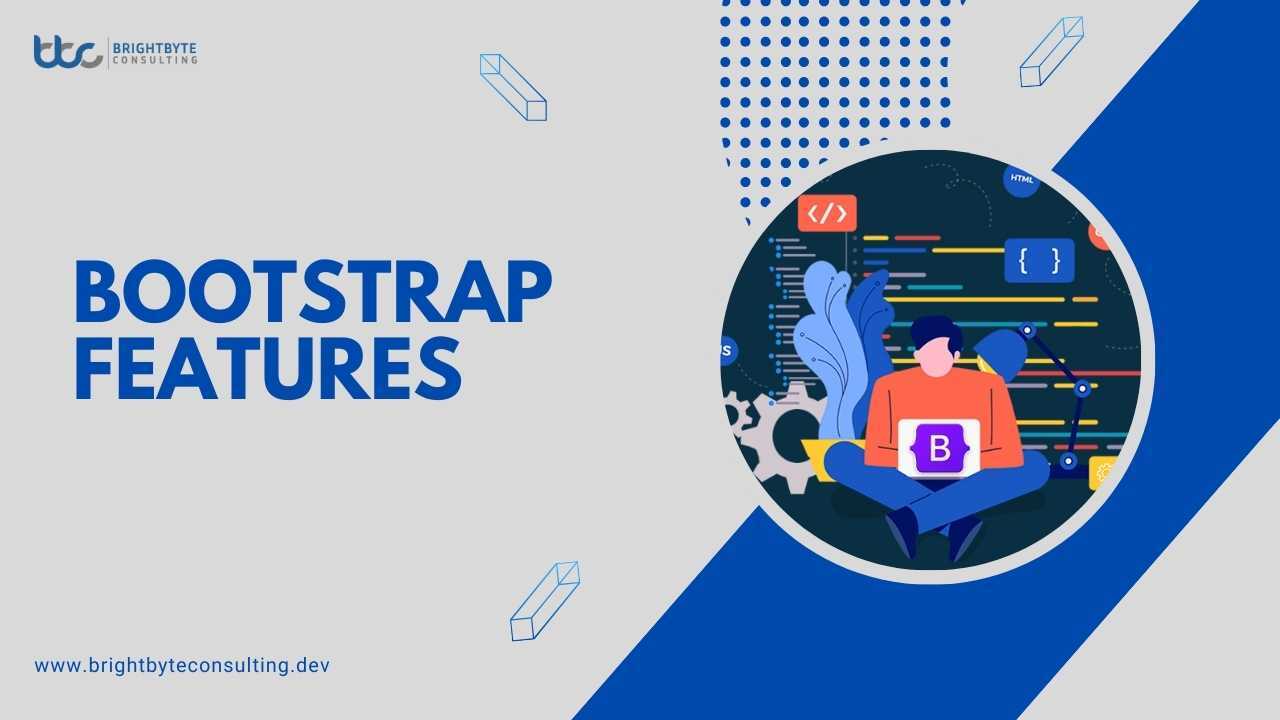If you want to reach people around the world using different devices, React Native is a good choice for making apps. It lets you build apps for different platforms like iOS and Android using the same code. This saves time and money because you don’t have to write separate code for each platform.
Facebook supports React Native, which helps developers share their code easily and make apps faster. It’s also good for finding and fixing problems in your code.
But like any popular technology, React Native has its drawbacks. Sometimes it doesn’t work well with certain devices, or it might make your app run slowly.
That’s why it’s important to know about React Native Alternatives. This article will talk about some popular alternatives to React Native that you can use for building apps.
What is React Native?
React Native is all about learning once and being able to write code that works on different devices. It’s like combining the best parts of making apps specifically for each device with a really good tool called React, which helps make the parts of the app people interact with.
Lots of big companies use React Native to make apps that work on different devices but still feel like they were made specifically for each one. It’s good because it saves money, you can change things easily, the apps run smoothly, and you can use the same code for different platforms.
Facebook uses React Native for its own apps, and it’s free to use. It’s easy for developers and makes designing the look of the app simpler while making sure it works on different devices.
11 Top Alternatives to React Native for Mobile App Development
Flutter
Flutter is a tool from Google that helps make apps for different devices using the same code. It’s good for making apps look nice and work well, and you can use it for web, mobile, and desktop apps.
Xamarin
Xamarin is a tool from Microsoft that lets you make apps for different devices with one codebase. It’s good because it uses a programming language called C# and has lots of pre-designed parts to make your apps look and work like they were made just for that device.
Ionic
Ionic is a popular choice for Apps Development that work on different devices. It’s built on top of other tools like AngularJS and Apache Cordova, and it supports different JavaScript frameworks. It’s good for making apps quickly and combining the best of mobile and web technology.
Apache Cordova
Apache Cordova, also known as PhoneGap, helps make apps using HTML, CSS, and JavaScript. It’s easy to use and works on different platforms like Windows and Blackberry. It’s good because you can make apps without having to learn new languages.
jQuery Mobile
jQuery Mobile is a JavaScript library that helps make apps and websites for different devices. It’s easy to use and has lots of features like animations and DOM manipulation. It’s good for making responsive apps that work well on different devices.
Bootstrap
Bootstrap is a toolkit for making apps and websites that work on different devices. It uses JavaScript, HTML, and CSS to make things look nice and work well. It’s good for making apps quickly and easily customizable.
Swift
Swift is a programming language for making apps specifically for Apple devices like iPhones and iPads. It’s easy to use and works well with other Apple technologies. It’s good for making apps that look nice and run smoothly on Apple devices.
Framework7
Framework7 helps make apps that look and work like they were made for specific devices. It’s easy to use and has lots of features for making things look nice and run smoothly. It’s good for making apps for different platforms like iOS and Android.
NativeScript
NativeScript helps make apps using JavaScript frameworks like Angular and Vue. It’s good because you can reuse your web skills to make native apps for different devices. It’s good for making apps quickly and easily.
Onsen UI
Onsen UI is a framework for making apps using web technologies like HTML, CSS, and JavaScript. It’s easy to learn and has lots of features for making apps that work well on different devices. It’s good for making native-feeling apps quickly and easily.
React Navigation
React Navigation is a framework for making apps with easy-to-use navigation. It’s good because it has components for different devices and offers a seamless experience. It’s good for making apps with smooth transitions between screens.
Conclusion
Choosing the right tool for making apps depends on different things like how easy it is to use, how well it works, and how quickly you need to make the app. Each of these alternatives to React Native has its own strengths and weaknesses, so it’s important to think about what you need before deciding which one to use.
FAQs
What is React Native?
React Native is a framework for building mobile applications that work on multiple platforms, such as iOS and Android, using the same codebase. It combines the best aspects of native development with React, a JavaScript library for building user interfaces.
Why is React Native popular?
React Native is popular because it allows developers to create apps that look and feel like native apps while using a single codebase for different platforms. This saves time and money and makes it easier to maintain and update the apps.
What are the drawbacks of React Native?
Some drawbacks of React Native include compatibility issues with certain devices and occasional performance issues, such as apps running slowly. However, these drawbacks can often be mitigated with proper optimization and troubleshooting.
What are some to React Native alternatives?
Some alternatives to React Native include Flutter, Xamarin, Ionic, Apache Cordova, jQuery Mobile, Bootstrap, Swift, Framework7, NativeScript, Onsen UI, and React Navigation. Each of these alternatives has its own strengths and weaknesses, so it’s important to consider your specific needs before choosing one.
How does React Native compare to its alternatives?
React Native offers a balance of ease of use, performance, and cross-platform compatibility. Its alternatives, like Flutter, Xamarin, and Ionic, have their own unique features and strengths. Flutter is known for its beautiful UI, Xamarin for its C# language support, and Ionic for its seamless integration with web technologies.
Can I use React Native alternatives for web development?
While some alternatives like Ionic and Apache Cordova are specifically designed for cross-platform development, others like React Navigation and NativeScript primarily focus on mobile app development. However, frameworks like NativeScript can be extended for web development using JavaScript frameworks like Angular and Vue.
How do I choose the right alternative for my project?
Consider factors such as the project’s requirements, development team’s skills, budget, and timeline. Evaluate each alternative based on its ease of use, performance, community support, and compatibility with your project’s goals. Additionally, try experimenting with prototypes or small projects to see which alternative best suits your needs.











